2432-99-7
| 中文名 | 11-氨基十一酸 |
|---|---|
| 英文名 | 11-Aminoundecanoic acid |
| 中文别名 |
ω-氨基十一烷酸
11-氨基十一烷酸 |
| 英文别名 |
H-11-Aun-OH
NH2-(CH2)10-COOH 11-Aminoundecansure MFCD00008150 11-Amino-undecansaeure aminoundecanoicacid 11-Aminoundecanoic a EINECS 219-417-6 4-04-00-02823 (Beilstein Handbook Reference) 11-amino-undecanoicaci 11-amino-n-undecanoic acid 11-amino-undecanoic acid 11-aminoundecyclic acid 11-Aminoundecylic acid 11-Aminoundecanoic acid |
| 描述 | 11-Aminoundecanoic acid 是一种 PROTAC 连接桥,属于 alkyl chain类。11-Aminoundecanoic acid 可用于合成一系列 PROTAC 分子。 |
|---|---|
| 相关类别 | |
| 靶点 |
Alkyl-Chain |
| 参考文献 |
| 密度 | 1.0±0.1 g/cm3 |
|---|---|
| 沸点 | 334.9±15.0 °C at 760 mmHg |
| 熔点 | 188-191 °C(lit.) |
| 分子式 | C11H23NO2 |
| 分子量 | 201.306 |
| 闪点 | 156.3±20.4 °C |
| 精确质量 | 201.172882 |
| PSA | 63.32000 |
| LogP | 2.55 |
| 外观性状 | 白色结晶固体或粉末 |
| 蒸汽压 | 0.0±1.6 mmHg at 25°C |
| 折射率 | 1.470 |
| 储存条件 | 密封储存,储存于阴凉、干燥的库房。常用氮气保护。 |
| 稳定性 | 避免与不相容材料接触。禁止存放在55 ºC 的地方。
与强氧化剂,强酸,强碱反应。 |
| 水溶解性 | 2 g/L (20 ºC) |
| 计算化学 | 1.疏水参数计算参考值(XlogP):无 2.氢键供体数量:2 3.氢键受体数量:3 4.可旋转化学键数量:10 5.互变异构体数量:无 6.拓扑分子极性表面积63.3 7.重原子数量:14 8.表面电荷:0 9.复杂度:137 10.同位素原子数量:0 11.确定原子立构中心数量:0 12.不确定原子立构中心数量:0 13.确定化学键立构中心数量:0 14.不确定化学键立构中心数量:0 15.共价键单元数量:1 |
| 更多 | 1. 性状:白色无味的结晶性粉末 2. 密度(g/mL,25℃):未确定 3. 相对蒸汽密度(g/mL,空气=1):未确定 4. 熔点(ºC):188-191 5. 沸点(ºC,常压):未确定 6. 沸点(ºC,42mmHg):未确定 7. 折射率(n20/D):未确定 8. 闪点(ºC):未确定 9. 比旋光度(º):未确定 10. 自燃点或引燃温度(ºC):未确定 11. 蒸气压(mPa,20ºC):未确定 12. 饱和蒸气压(kPa,25ºC):未确定 13. 燃烧热(KJ/mol):未确定 14. 临界温度(ºC):未确定 15. 临界压力(KPa):未确定 16. 油水(辛醇/水)分配系数的对数值:未确定 17. 爆炸上限(%,V/V):未确定 18. 爆炸下限(%,V/V):未确定 19. 溶解性:溶于水 |
|
SECTION 1: Identification of the substance/mixture and of the company/undertaking Product identifiers Product name: 11-Aminoundecanoic acid REACH No.: A registration number is not available for this substance as the substance or its uses are exempted from registration, the annual tonnage does not require a registration or the registration is envisaged for a later registration deadline.
CAS-No.: 2432-99-7 Relevant identified uses of the substance or mixture and uses advised against Identified uses: Laboratory chemicals, Manufacture of substances SECTION 2: Hazards identification Classification of the substance or mixture Not a hazardous substance or mixture according to Regulation (EC) No. 1272/2008. Classification according to EU Directives 67/548/EEC or 1999/45/EC R52 For the full text of the R-phrases mentioned in this Section, see Section 16. Label elements Other hazards This substance/mixture contains no components considered to be either persistent, bioaccumulative and toxic (PBT), or very persistent and very bioaccumulative (vPvB) at levels of 0.1% or higher. SECTION 3: Composition/information on ingredients Substances Formula: C11H23NO2 Molecular weight: 201,31 g/mol CAS-No.: 2432-99-7 EC-No.: 219-417-6 Hazardous ingredients according to Regulation (EC) No 1272/2008 ComponentClassificationConcentration 11-Aminoundecanoic acid CAS-No.2432-99-7<= 100 % EC-No.219-417-6 Hazardous ingredients according to Directive 1999/45/EC ComponentClassificationConcentration 11-Aminoundecanoic acid CAS-No.2432-99-7R52<= 100 % EC-No.219-417-6 SECTION 4: First aid measures Description of first aid measures General advice Consult a physician. Show this safety data sheet to the doctor in attendance. If inhaled If breathed in, move person into fresh air. If not breathing, give artificial respiration. Consult a physician. In case of skin contact Wash off with soap and plenty of water. Consult a physician. In case of eye contact Flush eyes with water as a precaution. If swallowed Never give anything by mouth to an unconscious person. Rinse mouth with water. Consult a physician. Most important symptoms and effects, both acute and delayed The most important known symptoms and effects are described in the labelling (see section 2.2) and/or in section 11 Indication of any immediate medical attention and special treatment needed No data available SECTION 5: Firefighting measures Extinguishing media Suitable extinguishing media Use water spray, alcohol-resistant foam, dry chemical or carbon dioxide. Special hazards arising from the substance or mixture Carbon oxides, Nitrogen oxides (NOx) Advice for firefighters Wear self-contained breathing apparatus for firefighting if necessary. Further information No data available SECTION 6: Accidental release measures Personal precautions, protective equipment and emergency procedures Avoid dust formation. Avoid breathing vapours, mist or gas. Ensure adequate ventilation. For personal protection see section 8. Environmental precautions Prevent further leakage or spillage if safe to do so. Do not let product enter drains. Discharge into the environment must be avoided. Methods and materials for containment and cleaning up Pick up and arrange disposal without creating dust. Sweep up and shovel. Keep in suitable, closed containers for disposal. Reference to other sections For disposal see section 13. SECTION 7: Handling and storage Precautions for safe handling Provide appropriate exhaust ventilation at places where dust is formed. For precautions see section 2.2. Conditions for safe storage, including any incompatibilities Store in cool place. Keep container tightly closed in a dry and well-ventilated place. Storage class (TRGS 510): Non Combustible Solids Specific end use(s) Apart from the uses mentioned in section 1.2 no other specific uses are stipulated SECTION 8: Exposure controls/personal protection Control parameters Components with workplace control parameters Exposure controls Appropriate engineering controls Handle in accordance with good industrial hygiene and safety practice. Wash hands before breaks and at the end of workday. Personal protective equipment Eye/face protection Use equipment for eye protection tested and approved under appropriate government standards such as NIOSH (US) or EN 166(EU). Skin protection Handle with gloves. Gloves must be inspected prior to use. Use proper glove removal technique (without touching glove's outer surface) to avoid skin contact with this product. Dispose of contaminated gloves after use in accordance with applicable laws and good laboratory practices. Wash and dry hands. The selected protective gloves have to satisfy the specifications of EU Directive 89/686/EEC and the standard EN 374 derived from it. Body Protection Choose body protection in relation to its type, to the concentration and amount of dangerous substances, and to the specific work-place., The type of protective equipment must be selected according to the concentration and amount of the dangerous substance at the specific workplace. Respiratory protection Respiratory protection is not required. Where protection from nuisance levels of dusts are desired, use type N95 (US) or type P1 (EN 143) dust masks. Use respirators and components tested and approved under appropriate government standards such as NIOSH (US) or CEN (EU). Control of environmental exposure Prevent further leakage or spillage if safe to do so. Do not let product enter drains. Discharge into the environment must be avoided. SECTION 9: Physical and chemical properties Information on basic physical and chemical properties a) AppearanceForm: powder Colour: white b) OdourNo data available c) Odour ThresholdNo data available d) pHNo data available e) Melting point/freezingMelting point/range: 188 - 191 °C - lit. point f) Initial boiling point and No data available boiling range g) Flash pointNo data available h) Evaporation rateNo data available i) Flammability (solid, gas) The product is not flammable. - Flammability (solids) j) Upper/lowerNo data available flammability or explosive limits k) Vapour pressureNo data available l) Vapour densityNo data available m) Relative densityNo data available n) Water solubility0,8 g/l at 25 °C - soluble o) Partition coefficient: n- No data available octanol/water p) Auto-ignition> 360 °C at 1.013,25 hPa temperature q) Decomposition> 180 - < 240 °C - temperature r) ViscosityNo data available s) Explosive propertiesNo data available t) Oxidizing propertiesNo data available Other safety information Bulk density0,5 g/l at 20 °C SECTION 10: Stability and reactivity Reactivity No data available Chemical stability Stable under recommended storage conditions. Possibility of hazardous reactions No data available Conditions to avoid No data available Incompatible materials Strong bases Hazardous decomposition products Other decomposition products - No data available In the event of fire: see section 5 SECTION 11: Toxicological information Information on toxicological effects Acute toxicity LD50 Oral - Rat - female - 14.700 - 21.500 mg/kg (OECD Test Guideline 401) LD0 Dermal - Rat - male and female - >= 2.000 mg/kg (OECD Test Guideline 402) Skin corrosion/irritation Skin - Rabbit Result: No skin irritation - 23 h (OECD Test Guideline 404) Serious eye damage/eye irritation Eyes - Rabbit Result: No eye irritation - 7 d (OECD Test Guideline 405) Respiratory or skin sensitisation Maximisation Test (GPMT) - Guinea pig Result: Does not cause skin sensitisation. (OECD Test Guideline 406) Germ cell mutagenicity Hamster ovary Result: negative OECD Test Guideline 484 Mouse - male Result: negative Carcinogenicity Carcinogenicity - Rat - Oral Tumorigenic:Carcinogenic by RTECS criteria. Kidney, Ureter, Bladder:Tumors. Carcinogenicity - Rat - Oral Tumorigenic:Neoplastic by RTECS criteria. Skin and Appendages: Other: Tumors. IARC:3 - Group 3: Not classifiable as to its carcinogenicity to humans (11-Aminoundecanoic acid) Reproductive toxicity No data available Specific target organ toxicity - single exposure No data available Specific target organ toxicity - repeated exposure No data available Aspiration hazard No data available Additional Information RTECS: YQ2293000 SECTION 12: Ecological information Toxicity Toxicity to fishstatic test LC50 - Danio rerio (zebra fish) - > 833 mg/l - 96 h (OECD Test Guideline 203) Toxicity to daphnia and static test EC50 - Daphnia magna (Water flea) - > 350 mg/l - 48 h other aquatic(OECD Test Guideline 202) invertebrates Toxicity to algaestatic test EC50 - Pseudokirchneriella subcapitata - 53 mg/l - 72 h (OECD Test Guideline 201) Toxicity to bacteriaGrowth inhibition EC50 - Pseudomonas putida - 1,5 mg/l - 16 h Persistence and degradability Biodegradabilityaerobic - Exposure time 28 d Result: 77 % - Readily biodegradable. (OECD Test Guideline 301B) Bioaccumulative potential No data available Mobility in soil No data available Results of PBT and vPvB assessment This substance/mixture contains no components considered to be either persistent, bioaccumulative and toxic (PBT), or very persistent and very bioaccumulative (vPvB) at levels of 0.1% or higher. Other adverse effects Harmful to aquatic life. SECTION 13: Disposal considerations Waste treatment methods Product Offer surplus and non-recyclable solutions to a licensed disposal company. Dissolve or mix the material with a combustible solvent and burn in a chemical incinerator equipped with an afterburner and scrubber. Contaminated packaging Dispose of as unused product. SECTION 14: Transport information UN number ADR/RID: -IMDG: -IATA: - UN proper shipping name ADR/RID: Not dangerous goods IMDG: Not dangerous goods IATA:Not dangerous goods Transport hazard class(es) ADR/RID: -IMDG: -IATA: - Packaging group ADR/RID: -IMDG: -IATA: - Environmental hazards ADR/RID: noIMDG Marine pollutant: noIATA: no Special precautions for user No data available SECTION 15: Regulatory information This safety datasheet complies with the requirements of Regulation (EC) No. 1907/2006. Safety, health and environmental regulations/legislation specific for the substance or mixture No data available Chemical Safety Assessment For this product a chemical safety assessment was not carried out SECTION 16: Other information Full text of R-phrases referred to under sections 2 and 3 R52 Harmful to aquatic organisms. Further information Copyright 2014 Co. LLC. License granted to make unlimited paper copies for internal use only. The above information is believed to be correct but does not purport to be all inclusive and shall be used only as a guide. The information in this document is based on the present state of our knowledge and is applicable to the product with regard to appropriate safety precautions. It does not represent any guarantee of the properties of the product. Corporation and its Affiliates shall not be held liable for any damage resulting from handling or from contact with the above product. See and/or the reverse side of invoice or packing slip for additional terms and conditions of sale. |
|
毒理学数据: 1、急性毒性:大鼠经口LDLo:14700μg/kg; 2、其他多剂量毒性:大鼠经口TDLo:68250mg/kg/13W-C; 3、慢性毒性/致癌性 大鼠经口TDLo:655mg/kg/2Y-C;大鼠经口TD:328mg/kg/2Y-C; 4、 致突变性 地鼠胚胎的形态转化:2500mmol /L; 仓鼠卵巢的姐妹染色单体交换:500mg/L; 生态学数据: 对水稍微危害,避免未稀释或大量的产品接触地下水、水道或污水系统。 CHEMICAL IDENTIFICATION
HEALTH HAZARD DATAACUTE TOXICITY DATA
MUTATION DATA
|
| 个人防护装备 | Eyeshields;Gloves;type N95 (US);type P1 (EN143) respirator filter |
|---|---|
| 危害码 (欧洲) | Xn:Harmful; |
| 风险声明 (欧洲) | 52 |
| 安全声明 (欧洲) | S24/25 |
| 危险品运输编码 | NONH for all modes of transport |
| WGK德国 | 1 |
| RTECS号 | YQ2293000 |
| 海关编码 | 29224995 |
| 上游产品 7 | |
|---|---|
| 下游产品 10 | |
| 海关编码 | 2922499990 |
|---|---|
| 中文概述 | 2922499990 其他氨基酸及其酯及它们的盐(含有一种以上含氧基的除外). 增值税率:17.0% 退税率:9.0% 监管条件:AB(入境货物通关单,出境货物通关单) 最惠国关税:6.5% 普通关税:30.0% |
| 申报要素 | 品名, 成分含量, 用途, 乙醇胺及其盐应报明色度, 乙醇胺及其盐应报明包装 |
| 监管条件 | A.入境货物通关单 B.出境货物通关单 |
| 检验检疫 | P.进境动植物、动植物产品检疫 Q.出境动植物、动植物产品检疫 R.进口食品卫生监督检验 S.出口食品卫生监督检验 M.进口商品检验 N.出口商品检验 |
| Summary | HS:2922499990 other amino-acids, other than those containing more than one kind of oxygen function, and their esters; salts thereof VAT:17.0% Tax rebate rate:9.0% Supervision conditions:AB(certificate of inspection for goods inward,certificate of inspection for goods outward) MFN tariff:6.5% General tariff:30.0% |




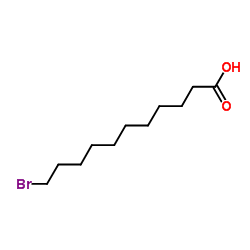
![(Z)-11-[(2R,3S)-3-pentyloxiran-2-yl]undec-9-enoic acid结构式](https://image.chemsrc.com/caspic/308/17966-13-1.png)
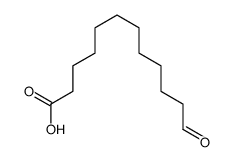

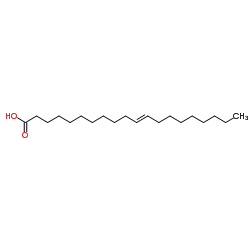



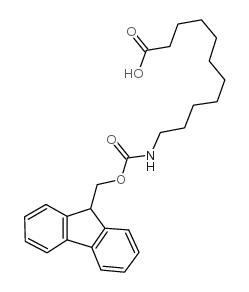

![11-[(叔丁氧羰基)氨基]十一烷酸结构式](https://image.chemsrc.com/caspic/253/10436-25-6.png)

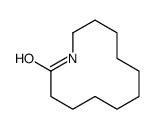
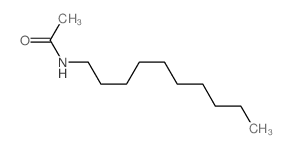
![11-[(2-chloroacetyl)amino]undecanoic acid结构式](https://image.chemsrc.com/caspic/398/65332-02-7.png)